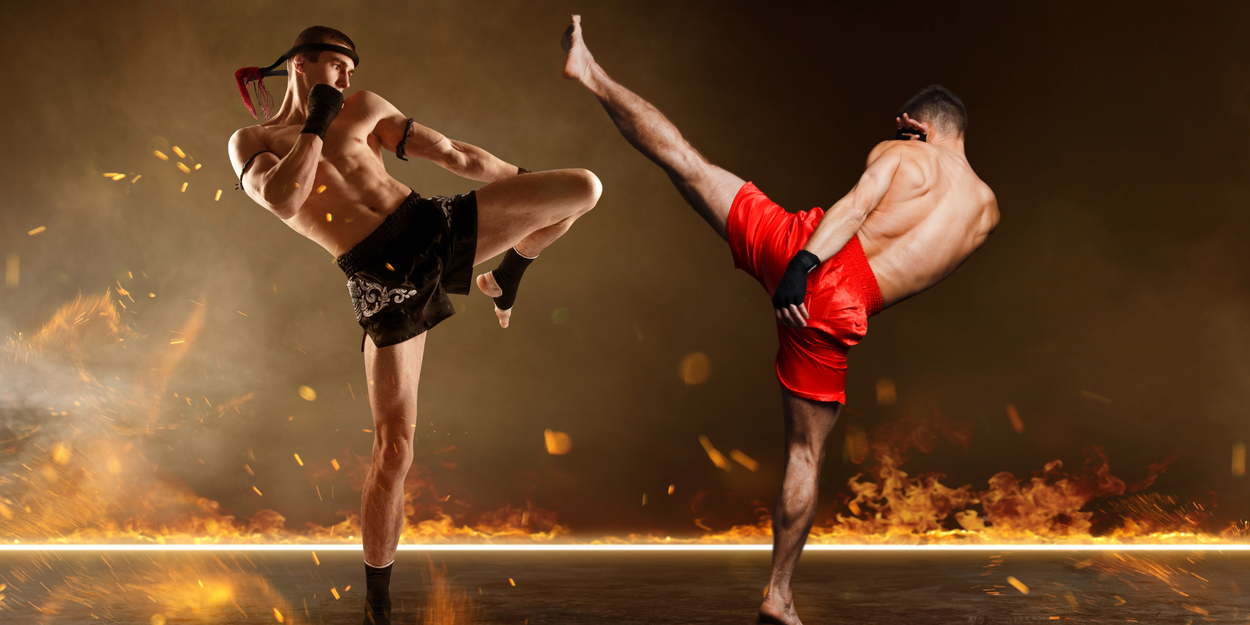Immerse yourself in the captivating world of martial arts as we delve into a gripping comparison between Muay Thai and Kickboxing, two power-packed combat sports. This post will uncover the unique styles, intriguing similarities, and distinct differences that set these two apart. We’ll bring you a ringside view of these adrenaline-fuelled sports, introducing you to their rich histories, distinctive techniques, and global influence.
The comparison of Muay Thai and Kickboxing goes beyond a mere comparison of techniques and rules. Each sport has its own philosophy, heritage, and cultural significance that adds depth to their study. Our exploration will unveil the fascinating cultural roots and historical evolution of these martial arts, and how they have shaped the sports we know and love today.
In the world of combat sports, understanding the intricacies and nuances of each martial art’s style can be a game-changer. Muay Thai and Kickboxing, while sharing some common ground, have unique styles that define them. This exploration will give you a detailed insight into the key differences and similarities in their techniques, training methods, and fighting styles.
Lastly, we’ll delve into the practicalities of these sports – the physical demands, the training regimen, the potential injuries, and the road to mastery. Whether you’re a martial arts enthusiast, a practicing martial artist, or simply curious about these sports, this comprehensive comparison promises to be an enlightening journey into the thrilling world of Muay Thai and Kickboxing. Buckle up and get ready for an intense ride!

Deciphering the Art of Muay Thai
Muay Thai, also known as the “art of eight limbs,” hails from the country of Thailand. This ancient martial art is celebrated for its unique blend of striking techniques that employ the hands, feet, elbows, and knees, thus earning its moniker.
Characteristic Features of Muay Thai
The key elements of Muay Thai can be broken down as follows:
- Physical Conditioning: Muay Thai training is notably intense, with a strong focus on cardio and strength conditioning. This is because the techniques require substantial physical stamina and strength.
- Eight Points of Contact: Unlike many other martial arts, Muay Thai uses eight points of contact – two fists, two elbows, two knees, and two feet. This allows for a broader range of attacks and defense.
- Clinching: The clinch, a grappling maneuver, is a distinguishing aspect of Muay Thai. It involves holding the opponent while launching strikes using knees or elbows.
Understanding Kickboxing
Kickboxing, as the name suggests, is a martial art style that combines punches (boxing) and kicks. Although its origin is traced back to Japan, its popularity has spread worldwide.

Key Features of Kickboxing
The fundamental components of Kickboxing include:
- Physical Conditioning: Similar to Muay Thai, Kickboxing also demands high levels of physical fitness, particularly cardiovascular endurance and muscular strength.
- Four Points of Contact: Kickboxing primarily uses the fists and feet for striking, resulting in four points of contact. This is fewer compared to Muay Thai.
- Combination Strikes: A notable feature of Kickboxing is the emphasis on combination strikes. This involves linking a series of punches and kicks to create an effective offensive strategy.
Comparing Muay Thai and Kickboxing
Despite sharing certain similarities, these two martial arts forms have distinct differences that set them apart.
Technique and Strategy
Muay Thai emphasizes on the use of all eight limbs for striking, which can lead to a more diverse range of attacks. The use of elbows and knees in close-quarters combat can be particularly effective. The clinch is also a crucial part of Muay Thai, allowing fighters to control their opponent while landing decisive strikes.
On the other hand, Kickboxing focuses on a combination of punches and kicks, with an emphasis on footwork and movement. The absence of elbow and knee strikes as well as clinching reduces the range of techniques but enhances the importance of speed and agility.
Rules and Regulations
Muay Thai and Kickboxing have different rulesets, which reflect their unique fighting styles. Muay Thai permits the use of elbows and knees, as well as clinching. Conversely, most kickboxing formats do not allow these techniques.
In conclusion, both Muay Thai and Kickboxing offer their unique blend of techniques, strategies, and physical conditioning. They are both highly effective martial arts, and the choice between the two often depends on personal preference and the specific goals of the practitioner.
Conclusion
In wrapping up the epic battle of titans: Muay Thai versus Kickboxing, it’s evident that both martial arts possess their unique styles and techniques, forming a tapestry of combat artistry that’s as diverse as it is powerful. Muay Thai, with its renowned ‘eight limbs’ strategy, is a versatile and holistic approach to martial arts, leveraging knees, elbows, fists, and feet to deliver a wide array of strikes. This technique, coupled with the intense physical conditioning and the effective use of clinching, truly sets it apart.
On the other hand, Kickboxing, while limiting its points of contact to fists and feet, emphasizes swift footwork, agility, and combination strikes, creating an equally formidable style that’s both efficient and strategic. Despite the lack of elbows, knees, and clinching, Kickboxing holds its ground with its focus on speed and precision.
While these two art forms share some similarities, their unique characteristics and rulesets contribute to their distinct identities. Whether you gravitate towards the comprehensive approach of Muay Thai or the agility-focused strategy of Kickboxing, the choice largely depends on your personal preference and objectives.
In essence, both Muay Thai and Kickboxing are rich martial arts disciplines, each providing a unique perspective on combat and self-defense. They each offer a pathway to physical fitness, mental discipline, and self-discovery that’s unmatched, making them a valuable addition to anyone’s fitness journey.
